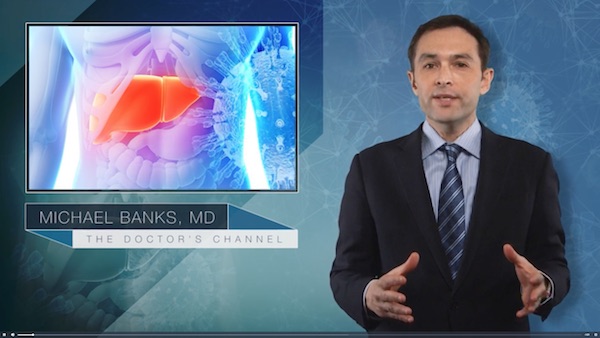Peginterferon alfa-2a reduces viral load in HIV-1 monoinfection
Reuters Health • The Doctor's Channel Daily Newscast
“Recognizing the research history of the earlier non-pegylated forms of interferon as a treatment for HIV, we conducted this trial to examine the impact of pegylated interferon on HIV load in the absence of HCV and to explore the mechanisms of the antiviral effect,” Dr. David M. Asmuth from University of California-Davis Medical School, Sacramento told Reuters Health by e-mail.
Dr. Asmuth and his colleagues treated 11 patients with 180 mcg of peginterferon alfa-2a per week, for 12 weeks. None had received any treatment for their HIV infection before this.
The median decrease in plasma viral load at week 12 was 0.61 log10 copies/mL. At 6 weeks after treatment ended, however, the viral load change from baseline was not statistically significant.
Median CD4+ percent increased significantly at week 4 (by 4.5%) and at week 12 (by 1.5%), but the CD4+ T cell count did not change significantly from baseline except for small increases at weeks 2 and 4.
Viral load decreases were not correlated with peginterferon alfa-2a concentrations or peginterferon AUC at weeks 1, 2, or 12.
Patients with larger increases in 2’,5’-oligoadenylate synthetase (OAS) activity had greater decreases in plasma viral load at weeks 1 and 2.
Patients with larger interferon-inducible gene (IFIG) induction levels showed larger decreases in plasma viral load, whereas patients with higher baseline IFIG levels had smaller decreases in plasma viral load at week 12.
“The apparent association between high baseline induction of interferon inducible genes and a poor response to pegylated interferon was noted within a few weeks of starting therapy,” Dr. Asmuth said. “This both points to an ‘interferon resistant’ state that occurs presumably as HIV disease progresses, as well as a recognition that those who are not going to respond to pegylated interferon will declare themselves promptly.”
Pegylated interferon treatment was generally well tolerated, with only 1 patient experiencing grade 2 treatment-related depression.
“We expected that the treatment would be better tolerated than when administered in the setting of HCV infection and indeed it appeared that it was well tolerated,” Dr. Asmuth said.
“The design of the study did not address where (the drug) could fit in the spectrum of available treatment options,” Dr. Asmuth said. “It will be important for future studies to examine this question. I would anticipate that patients who have very few options, perhaps with sensitivity to only a single agent that has clear activity against their virus, could have pegylated interferon added for a limited period of time to help reduce the emergence of resistance against the new agent(s).”
“Finally,” Dr. Asmuth added, “this research does point to possible future research pursuing the therapeutic role of specific interferon inducible gene products.”
Reference:
J Infect Dis 2010;201:1686-1696.






